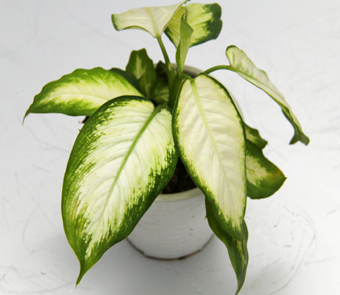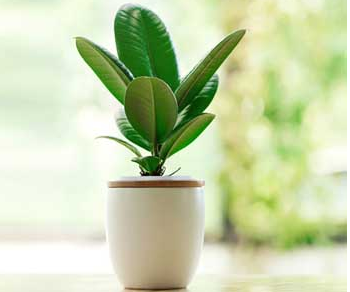How to plant Jiangxiang
Jiangxiang is a kind of traditional Chinese medicine, it is a kind of tree of the genus Dalbergia in Leguminosae, its medicinal part is the dry new wood of its trunk and root. The field is used to treat epigastric pain, fall injury and other diseases. It also has a certain ornamental value, at the same time, it can also be used as household wood, or extract deodorant oil as a deodorant. Many people do not know how to plant Jiangxiang, so today the editor will give you a brief introduction to the planting technology of Jiangxiang.

1. Planting environment
Jiangxiang has strict requirements on the planting environment, so this is one of the reasons why it is so rare. Generally speaking, the planting land of Jiangxiang should choose the mountain and gentle slope of moderate or slightly acidic soil, good drainage, sunny, brown or red loam. Secondly, the temperature of the planting site should be between 23 and 25 degrees on average, and the most suitable temperature for incense growth is between 20 and 25 degrees.
2. Methods of reproduction
The propagation methods of reducing incense are generally seed propagation and cutting propagation. Seed propagation we usually sow seeds in February and March every year. Before sowing, soak the seeds in hot water with a temperature of about 60 degrees. After a day, we can fish out the seeds and sow them after drying. In this way, it can promote the speed of seed germination, which can emerge in about half a month. Cutting propagation is to use the trunk of Jiangxiang seedlings, or side branches for cutting, generally about a month to grow a new root system.
3. Cultivation and management
Generally speaking, when the seedlings grow to about 50 centimeters, we can carry out transplanting and planting. The initial planting density is about 300 to 500 saplings per mu, and the planting density is reasonably planned according to the fertility of the soil. In general, the spacing between rows of each plant is about two meters, and the spacing between plants is one meter or 1.5 meters. After planting, we have to water every morning and evening until the seedlings grow new roots, during which we continue to replenish the seedlings. In the process of seedling growth, we should pay attention to tree-shaped pruning to promote the growth of seedlings, in the later stage, slowly cultivate the main branches of seedlings to form a crown, and to prune the crown to maintain reasonable permeability. In the process of reducing incense growth, that is, in the first four years or so, we should organically combine fertilization, ploughing, soil cultivation, weeding, hole expansion and other work, about three to four times a year. After the fifth year, we only need to do field operations once a year.
4. Disease and pest control
There are also diseases and insect pests in the process of growth, such as nevus, anthrax, longicorn beetles and pseudo-inchworm. The black mole disease usually occurs around June or July every year, which harms the whole incense tree. We can use Bordeaux liquid to prevent and cure it. Anthrax is a very common disease and is usually treated with Bordeaux solution. Tumor-breasted longicorn beetles generally began to appear in February, until around April, causing serious harm to the twigs of falling incense, and can be poisoned by trichlorfon. The pseudo-inchworm generally appears in early April, and the main harm is also the fragrant twigs, which can be controlled by imidophos.
These are all the contents that the editor is going to explain to you today. Here, the editor simply introduces the planting process of Jiangxiang. If you want to understand the specific field management operation of Jiangxiang, remember to leave us a message.
- Prev

What if the evergreen leaves turn yellow? can I eat them?
To talk about this evergreen, although it is green all the year round, there will be some problems in the process of breeding. Let's take a look at the yellowing of evergreen leaves. Can evergreen eat: evergreen leaves yellow how to do: 1, too much watering: too much water will lead to lack of oxygen in the soil.
- Next

Does rubber tree blossom? how to reproduce?
When it comes to this rubber tree, it still looks like Magnolia magnolia. Many people will admit their mistakes and see if the rubber tree blossoms. How do rubber trees reproduce? Does the rubber tree blossom: the rubber tree wants to blossom, but it needs certain conditions to bloom. If it is planted in the place of origin, the probability of flowering is very high, and the flowers are small and lovely.
Related
- Fuxing push coffee new agricultural production and marketing class: lack of small-scale processing plants
- Jujube rice field leisure farm deep ploughing Yilan for five years to create a space for organic food and play
- Nongyu Farm-A trial of organic papaya for brave women with advanced technology
- Four points for attention in the prevention and control of diseases and insect pests of edible fungi
- How to add nutrient solution to Edible Fungi
- Is there any good way to control edible fungus mites?
- Open Inoculation Technology of Edible Fungi
- Is there any clever way to use fertilizer for edible fungus in winter?
- What agents are used to kill the pathogens of edible fungi in the mushroom shed?
- Rapid drying of Edible Fungi

